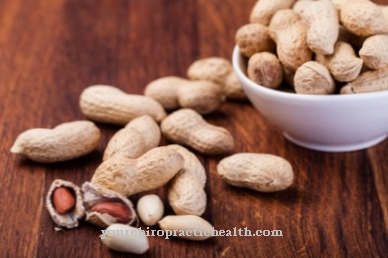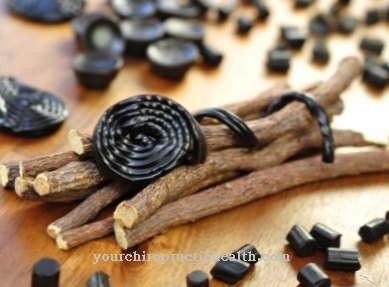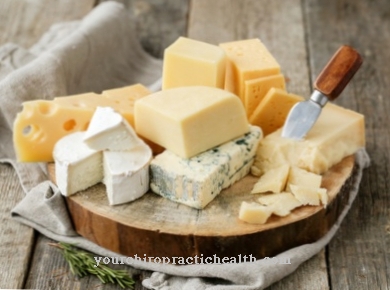The avocado is the fruit of the avocado tree. It is known for its high unsaturated fatty acid content.
What you should know about the avocado

The avocado tree, up to 15 meters high, originally comes from southern Mexico. There it was cultivated more than 10,000 years ago by the Indians of the Coxcatlán culture. During the 19th century, the avocado came to Chile, Madeira and the Caribbean with the Spanish. Avocado has only been grown in the Mediterranean region since the beginning of the 20th century. There are over 400 cultivars worldwide that are grown in Israel, southern Spain, Chile, California, Peru, New Zealand and Australia.
The avocado tree is evergreen and prefers to grow in warm and dry areas. The dark green leaves can be up to 50 centimeters long. The small yellowish or greenish flowers stand in terminal or lateral inflorescences. The avocado tree only bears fruit for the first time after four years. The avocado fruit is actually a berry. It is oval or pear-shaped and has a leathery shell.
This is colored dark green or medium green. Because of its outer skin, the acovado is too Alligator pear called. The name avocado comes from the word ahuavatl. In Nahuatl, ahuavatl means testicle. Over the centuries this became the Spanish word avocado. The green-yellow to golden-yellow pulp sits under the leathery outer skin. Inside the fruit is a hard core the size of a golf ball.
The weight of the avocados can fluctuate. The Fuerte avocado variety is usually offered in German retail. The fruits reach a weight of 200 to 450 grams. Hass avocados weigh between 150 and 400 grams. Seedless avocados are made from the unfertilized flowers of the Fuerte variety. These are also called avocaditos or mini avocados. They are only about two inches tall.
Avocados from tropical countries are usually significantly larger. Choquette or Pollock fruits can weigh up to three kilograms. The fruits that are offered in stores are usually still unripe. Avocados never ripen on the tree. They fall to the ground in an immature state. The avocado is one of the climacteric fruits. This means that the fruits are still ripe, even if they are no longer hanging on the tree.
Importance to health
The avocado contains many vital vitamins. Due to its high fat content, it ensures that the fat-soluble vitamins it contains can be easily absorbed in the digestive tract. The vitamins from other fruits that are combined with the avocado are also absorbed 50 to 100 percent better.
The vitamin A from the avocado is involved in blood formation and promotes the structure and regeneration of the skin. Vitamin A also plays an important role in the visual process. A lack of vitamin A can lead to night blindness. Bones and teeth also benefit from vitamin A. Like vitamin A, lutein from avocado is also involved in the process of vision. Lutein can prevent some eye diseases from developing.
Many people are initially put off by the high fat content of the avocado. The unsaturated fatty acids are known to have a positive effect on fat metabolism and cholesterol levels. If you have a high cholesterol level, it is advisable to replace unhealthy fats from sausage, cheese or margarine with the healthy fats from avocado.
Ingredients & nutritional values
| Nutritional information | Amount per 100 gram |
| Calories 160 | Fat content 15 g |
| cholesterol 0 mg | sodium 7 mg |
| potassium 485 mg | carbohydrates 9 g |
| protein 2 g | Fiber 7 g |
The avocado is best known for its high content of unsaturated fats. Together with the olive, it is one of the most fatty fruits. A medium-sized fruit contains around 40 grams of fat and 400 calories. Most of the fats are made from linoleic acid.
The avocado is not only rich in fat, but also in vitamins. If the fruit is consumed together with some freshly squeezed lemon juice, it covers the entire daily requirement for vitamin C. The avocado also contains folic acid, magnesium, copper, iron, vitamin E, vitamin A and a lot of fiber.
Intolerances & allergies
Food allergies to avocados are extremely rare. However, the fruits of the avocado tree contain a relatively high amount of histamine and should therefore be avoided by people with histamine intolerance. Because of its high fat content, the avocado can cause problems for people with sensitive stomachs and indigestion.
Shopping & kitchen tips
Avocados don't ripen on the tree. They are harvested unripe and are therefore also available in stores unripe. Soft avocado fruits on the supermarket shelf indicate that the fruits have been there for a long time.
Since there is no guarantee that the avocados have been stored correctly all the time, you should avoid buying soft fruits. Often these pre-ripened specimens have black and inedible areas. It is therefore best to choose a firm and unripe avocado when buying it. This can then ripen at home under good conditions.
The firm avocado is best stored with an apple in a paper bag or in a sheet of newspaper. Apples produce the ripening gas ethylene. This will make the avocado ripen faster. Depending on the original degree of ripeness, ripening can be shortened by two to ten days. Storage should be at room temperature. Under no circumstances should the avocado lie directly above or next to the heater. If the avocado is freshly picked, it takes about ten days to ripen. The avocados that are available in Central European supermarkets have an average ripening time of five days. Once the avocado is cut open, it will no longer ripen.
Before slicing it should be clear that the fruit is ready to eat. With a Hassavocado, the skin turns black as it ripens. If the fruit yields slightly to pressure, it is ripe. Avocados of the Fuerte variety, on the other hand, must not turn black. Black spots here are an indication of rot. But the same applies here: if the peel gives way to light finger pressure, the avocado is ready to be eaten.
Preparation tips
For consumption, the fruit must be cut lengthways. This involves cutting around the core. The two halves can then be easily detached from each other by turning them in opposite directions. If only half an avocado is to be used initially, the core can be left in the remaining half. It ensures that the rest of the fruit can be kept longer. The pulp of the avocado can easily be removed from the skin with a spoon. Since the pulp quickly turns brown in the air, the avocado should be eaten quickly. Alternatively, a little lemon juice can prevent oxidation.
Avocados are part of guacamole and taste good in fresh salads or as a topping on bread. The avocado should not be heated, otherwise it will develop a bitter taste.
























.jpg)



